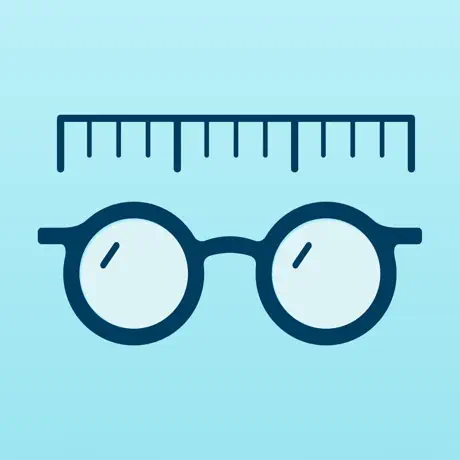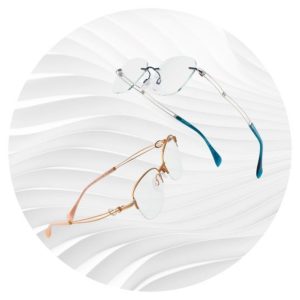Pupilary Distance (PD) Measurement
Pupilary Distance is the distance between the center of one pupil (the central black dot of your eye) to the center of the other pupil. Measured in millimeters, PD is important as it helps the laboratory technician to accurately create your eyeglasses frames by lining up your pupil with the center of the lens. As for obtaining your PD measurement, eye doctors are generally not legally obligated to give you this as it’s technically not part of the eye exam itself, but something measured for the purpose of creating eyeglasses frames. However, the reason why a doctor or a local optical shop would not give you your PD is because they want you to pay their inflated prices for frames and prescription lenses.
Does My PD Have to be Taken With My Frame?
The answer is “No”. A local doctor or optical store may tell you that but that is not true. A patient does not have to be wearing the frame for the PD to be correct because the PD is the distance from the middle of one pupil to the middle of the other pupil. Your PD is not going to change if you’re wearing glasses, in fact if you have your PD from a previous prescription and you’re an adult you can use that PD. Once you become an adult your PD does not change unlike a child or teenager..
Different Methods of Getting Your PD:
There are a five different ways of getting your PD and we have listed them in order of the best ways to get it. If you have any questions along the way please do not hesitate to contact us or call us at +1 (866) 665-6393.
- The simplest method is to go to your Eye Doctor or Optometrist for an eye exam. Ask your Eye Doctor, Optometrist, or Optician for your PD measurement.
- Call to a local optical store and pay a small fee for an optician to take your PD measurement.
- Have a helper use a NON-PERMANENT marker and a MM ruler to take this measurement.
- Have your helper stand in front of you and mark a dot in the center of each pupil on your glasses.
- Measure the distance between the dots in millimeters.
- Have a helper use a mm ruler to assist you with this measurement.
- PRINTABLE RULER AND INSTRUCTIONS
- Ask your helper to stand arms length away.
- Hold the ruler’s ‘0’ value to the left middle pupil and measure straight across to the middle of the other pupil. Keep the ruler straight and if you’re using the above printable ruler, make sure you keep paper straight as possible.
- Use the image to the right as an example.
- The distance between the middle of each pupil is the PD.
- While taking the PD measurement make sure the patient keeps looking straight ahead.
- Take the PD multiple times and even have multiple helpers then get the average for added accuracy.
- Measure yourself in front of a mirror: you need a mirror and a MM ruler.
- PRINTABLE RULER AND INSTRUCTIONS
- Stand with you face about 20 cm (8 inches) from the mirror.
- Close your right eye and look only with your left eye.
- Place a ruler flat against the mirror and align it horizontally with the millimeter scale pointing up.
- Look over the top of the ruler and align the zero mark in the center of your left pupil.
- Open your right eye and close the left, but do not move your face or the ruler.
- Read the millimeter measurement corresponding to the center of your right pupil.
- Repeat the procedure several times to make sure you have a consistent measurement.
What if I measure my PD wrong?
Taking your PD is very easy, however if there are any issues with us manufacturing your prescription lenses please don’t worry because we have an 100% Guarantee for our prescription lenses orders. If there’s any issues or you’re not happy with the lenses/frame or we’ll remake the lenses and/or allow you to choose another frame. Please consult our return policy for further details.








